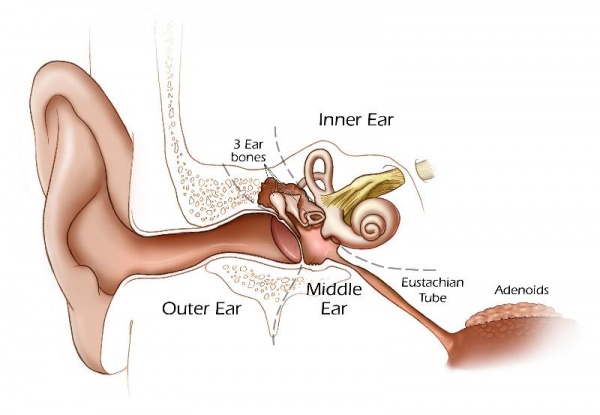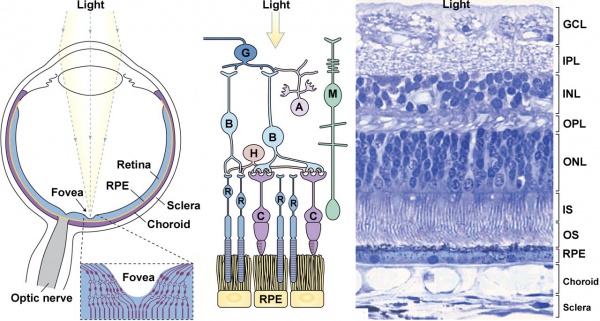K12 - Communication
Introduction
Biological communication occurs at many levels, from one cell communication with its neighbour in a tissue (paracrine, to signals released into the blood from one cell to signal to another cell or tissue (endocrine or hormone signaling). The signalling that occurs in the brain, spinal cord and other nervous tissues involves electrical (action potentials) signaling.
This page will introduce how signaling in our special sensory nervous system (hearing and vision) converts signals in one medium (sound pressure waves or light) into an electrical signal that our brain can understand. The content will also look at how these systems are formed in development.
This content is only as a brief introduction, designed for K12 students. More detailed information can be found on the listed linked pages.
Hearing - Sound
This cartoon shows the adult "ear" with the 3 main divisions (outer, middle, inner).
Vision - Light
This cartoon shows the eyeball (left), a cartoon of the retina cells (middle) and an actual slice of the human retina.
Glossary Links
- Glossary: A | B | C | D | E | F | G | H | I | J | K | L | M | N | O | P | Q | R | S | T | U | V | W | X | Y | Z | Numbers | Symbols | Term Link
Cite this page: Hill, M.A. (2024, April 24) Embryology K12 - Communication. Retrieved from https://embryology.med.unsw.edu.au/embryology/index.php/K12_-_Communication
- © Dr Mark Hill 2024, UNSW Embryology ISBN: 978 0 7334 2609 4 - UNSW CRICOS Provider Code No. 00098G

